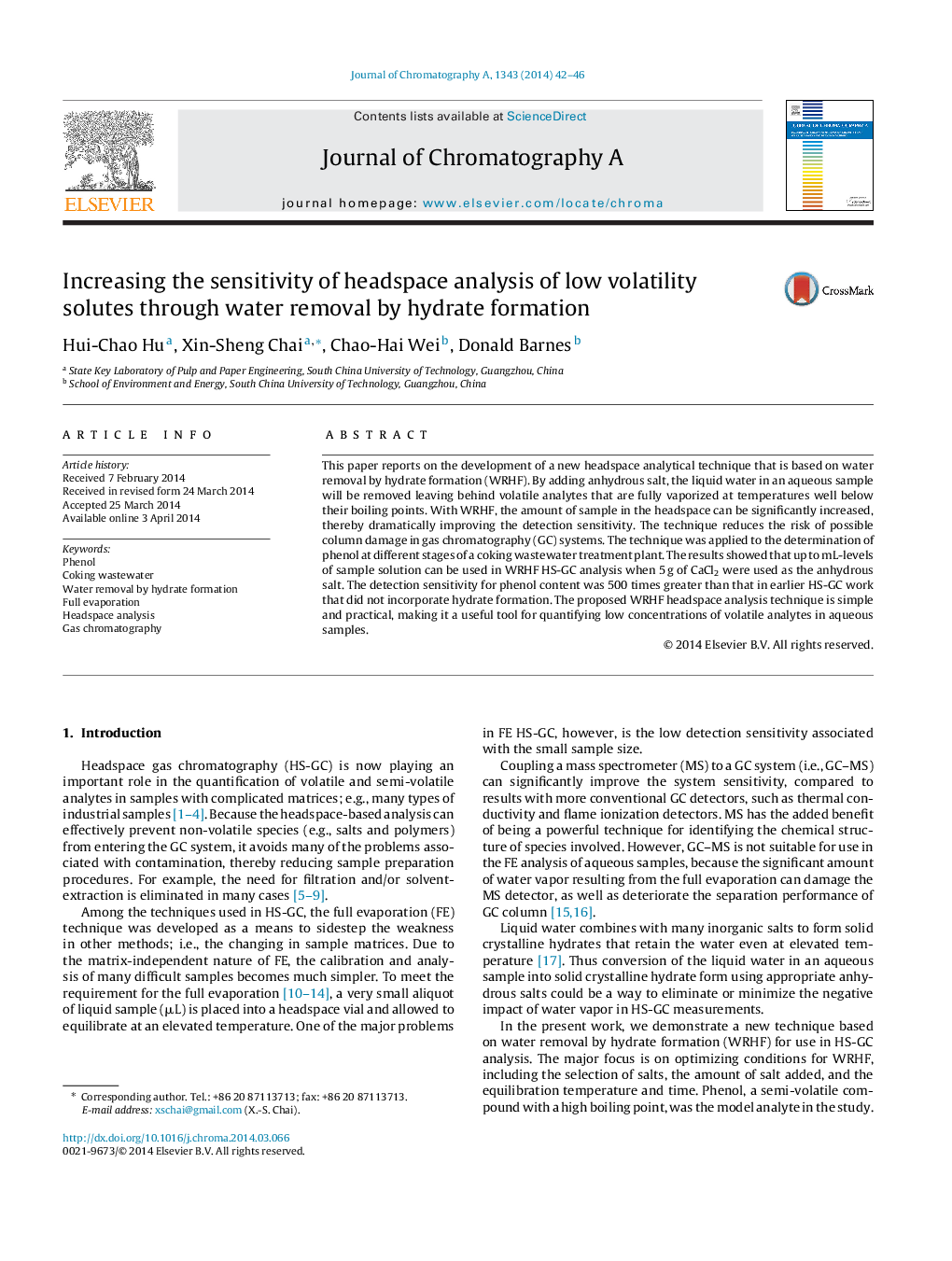| Article ID | Journal | Published Year | Pages | File Type |
|---|---|---|---|---|
| 1200048 | Journal of Chromatography A | 2014 | 5 Pages |
•A novel headspace analytical technique based on hydrate formation is developed.•The technique significantly improves the detection sensitivity.•It is possible to conduct a HS-GC/MS test for aqueous samples at high temperature.
This paper reports on the development of a new headspace analytical technique that is based on water removal by hydrate formation (WRHF). By adding anhydrous salt, the liquid water in an aqueous sample will be removed leaving behind volatile analytes that are fully vaporized at temperatures well below their boiling points. With WRHF, the amount of sample in the headspace can be significantly increased, thereby dramatically improving the detection sensitivity. The technique reduces the risk of possible column damage in gas chromatography (GC) systems. The technique was applied to the determination of phenol at different stages of a coking wastewater treatment plant. The results showed that up to mL-levels of sample solution can be used in WRHF HS-GC analysis when 5 g of CaCl2 were used as the anhydrous salt. The detection sensitivity for phenol content was 500 times greater than that in earlier HS-GC work that did not incorporate hydrate formation. The proposed WRHF headspace analysis technique is simple and practical, making it a useful tool for quantifying low concentrations of volatile analytes in aqueous samples.
